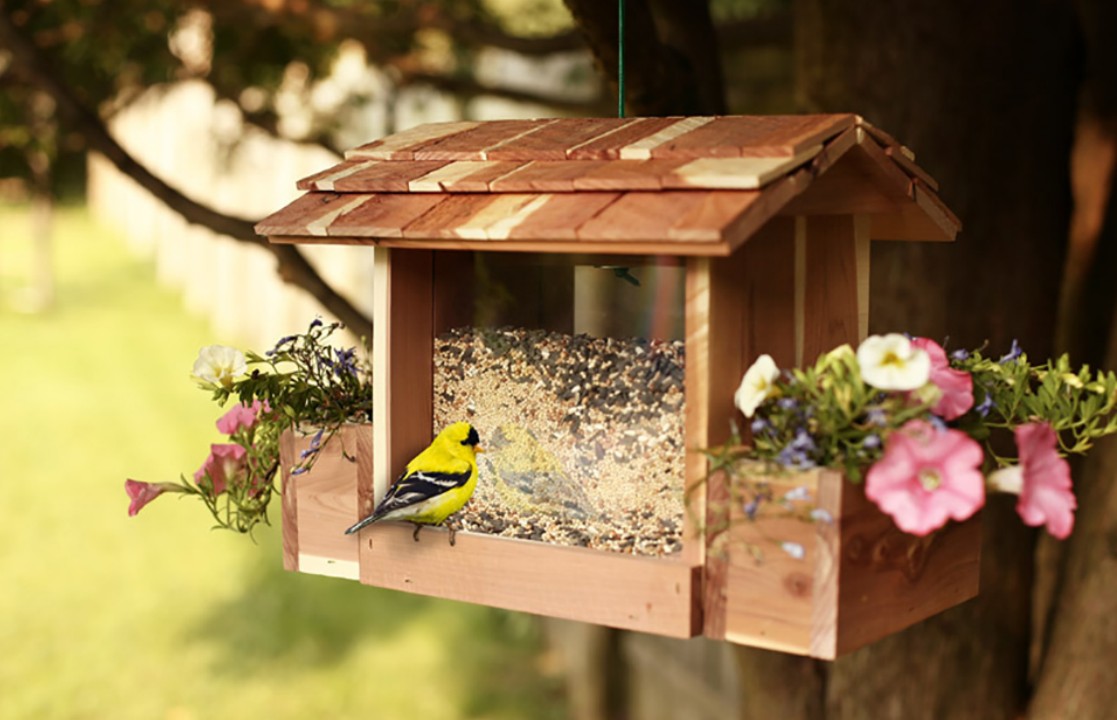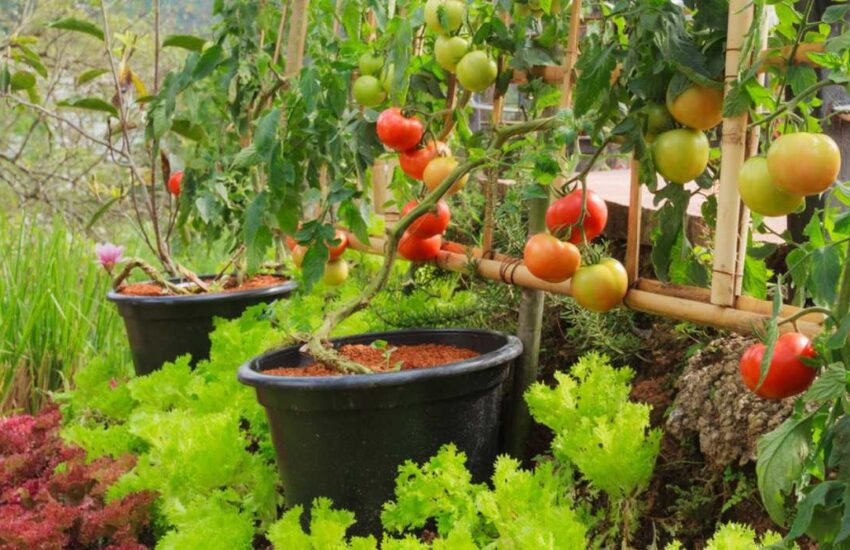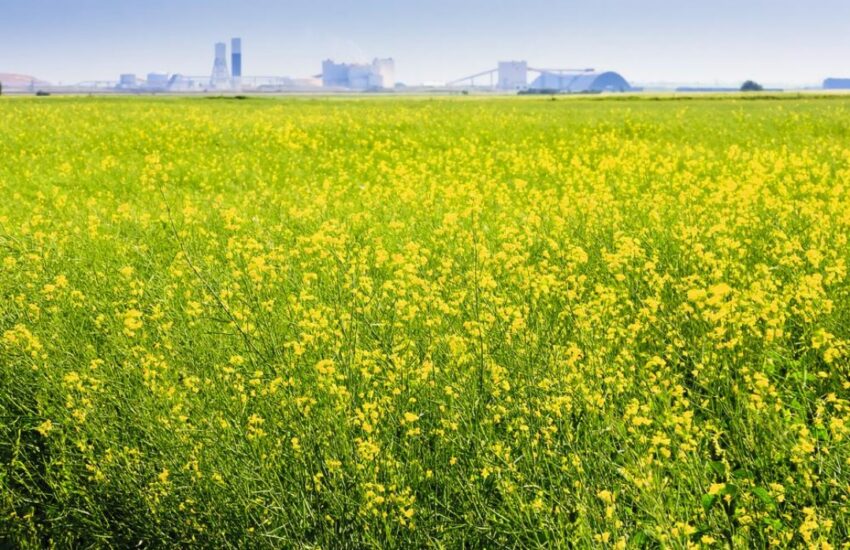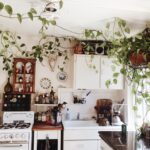Making a bird feeder for your garden is a great approach to get nature right inside your house. Not only is this a fun project that accentuates your outside area, but it also supplies food for local birds, enabling their year-round survival.
Building a bird feeder is a straightforward and satisfying chore that anyone can perform, regardless of their experience level. Using some imagination and a few tools, you can create a bird feeder that fits your design and draws a range of feathered friends.
This is a detailed walk-through guide for creating your own bird feeder.
1. Choose Your Bird Feeder Design
Choosing the kind of bird feeder you wish to create will help you determine the starting point. Various patterns exist and each draws different types of birds.
Here are some well-liked choices:
- Platform. Open-level feeders designed to hold several birds at once. Though it’s easy to build and occupy, it provides little defence against squirrels or rain.
- Cylindrical. Perfect for little seed-eating birds like finches and sparrows, a cylindrical feeder hangs from a tree or hook.
- Suet. Perfect for woodpeckers and other insect-eating birds, a suet feeder is a cage-like one meant to contain suet cakes.
- Repurposed House Goods. Items like plastic bottles, jars, or milk cartons that are recycled into feeders—a fantastic environmentally friendly alternative.
Select a design that complements your available materials, the kind of birds you wish to draw in your area, and your location.
2. Gather Your Materials
You should start gathering your supplies once you have decided on your design.
Made from a recycled bottle, a basic tube feeder requires:
- One to two-litre empty plastic bottle;
- Two wooden spoons or dowels;
- A piece of wire or thread (for hanging);
- Birdseed to stuff your feeder with;
- Either a utility knife or scissors;
- A basic drill or screwdriver.
This project is cheap and simple as these items are readily available at a local hardware shop or around your house. To make sure a platform feeder is bird-safe, think about using untreated wood. Steer clear of employing materials that include paint or possibly dangerous chemicals.
3. Prepare the Bottle
Start by completely washing and drying your plastic bottle. Any remaining liquid or residue can contaminate the birdseed, rendering it dangerous or unpalatable. Remove any labels as well to give your feeder a tidy look.
Choose where you want to locate the perches next. Birds need to land somewhere as they eat, thus building a few perches makes your feeder far more appealing.
About two to three inches from the bottom, cut little holes in opposing sides of the bottle using your scissors or utility knife. The holes should be somewhat bigger than the wooden spoons’ or dowels’ diameters.
In addition, make sure the holes line up so that the perches provide birds with a consistent landing ground.
4. Insert Perches
Stick wooden spoons or dowels through the holes you created in the bottle. Arrange the bowl of the spoon to extend out from the bottle, forming a perch and a tiny tray for the birdseed to drop upon.
This design keeps the seeds easily available while letting birds sit and eat with ease. If you are using dowels, you can make little cuts close to the feeding holes to assist in seed alignment.
Wiggle the perches carefully to make sure they won’t slide or spin too much when birds land. They should be steady and safe.
5. Create Feeding Holes
Now, create the feeding holes where birds will access the seeds. Cut small holes above each perch, about 2-3 cm above the spoons or dowels. These holes should be just large enough for birds to peck through without spilling too much seeds.
Be careful not to make the holes too large, as this can lead to wastage and attract larger, less desirable animals like squirrels. Test the feeder by adding a small amount of seed and shaking it gently to see how much spills out. Adjust the hole size if necessary.
If you want to prevent seed spillage, use a small piece of mesh or netting inside the bottle to control how much seed falls onto the spoon.
6. Add a Hanging Loop
Your feeder will hang from a loop you build at the top of the bottle. To fasten the cap, drill a tiny hole through it, and pass a length of wire or thread into the opening. Knot it inside the cap.
This will let you hang your feeder from a tree branch, hook, or any other appropriate location in your yard.
Make sure the loop is robust enough to support the weight of the loaded feeder, the birds falling on it, or the wind. If you use a wire, twist it firmly and tuck any sharp ends within the cap to prevent injuring birds.
7. Fill with Birdseed
Now for the entertaining aspect, filling your feeder!
Unscrew the cap, stuff birdseed into the bottle, then fasten the cap back in place. Sunflower seeds, mixed seed mixes, and peanuts are popular options for a great range of garden birds. Pick a seed mix fit for the birds you wish to draw in.
Position the feeder where it is readily seen, but away from places with strong foot traffic, predators, or inclement weather. Ideally, put it close to some sheltered shrubs or trees so birds can feel comfortable while they eat.
8. Monitor and Maintain Your Feeder
Maintaining a good feeding environment for birds depends on its cleanliness and amount of food you put in.
Check the food levels regularly, and replace as necessary. To stop mould, germs, and other dangerous pathogens, remove the feeder every few weeks and wash it with warm soapy water. Before refilling, properly rinse, then let it dry totally.
This easy upkeep prolongs the feeder’s lifetime and makes it safe for birds. Thus, it remains a constant source of delight as feathered guests live in your garden.
Every once in a while, look for signs of wear on the perches such as cracks or damage. Repair or replace parts as needed to guarantee the feeder stays safe and operates at peak level.
You can always invite professional gardening services to assist you with this task.
Conclusion
Constructing your own bird feeder is a fun hobby that not only accentuates your garden, but also helps nearby wildlife. A few easy steps can help you design a beautiful and useful feeder inviting a range of birds to your outside area.
Whether you’re building something complex or using salvaged goods, the delight of seeing birds swarm to your handiwork is rather satisfying.











